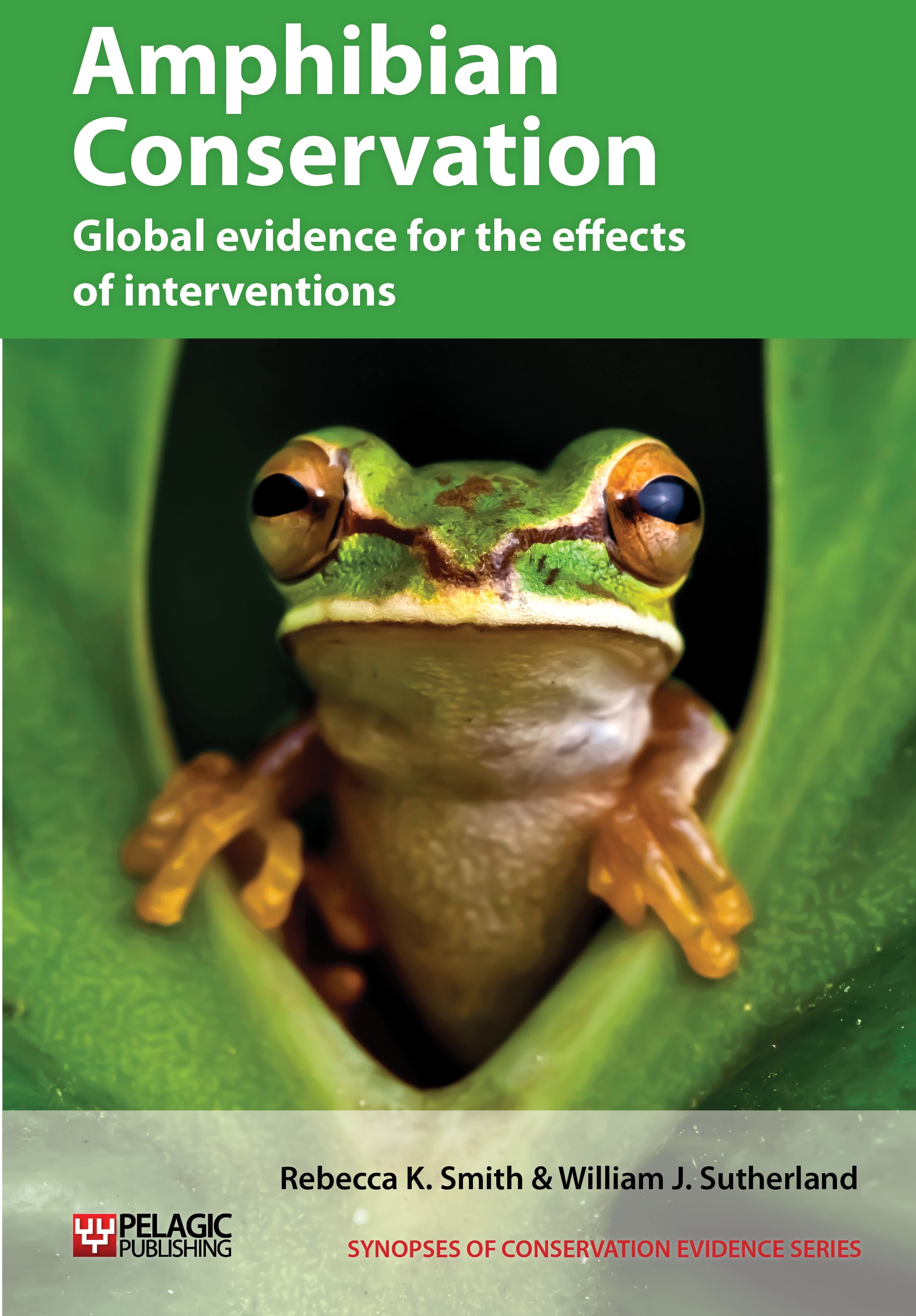Retain buffer zones around core habitat
-
Overall effectiveness category Trade-off between benefit and harms
-
Number of studies: 4
View assessment score
Hide assessment score
How is the evidence assessed?
-
Effectiveness
50% -
Certainty
50% -
Harms
25%
Study locations
Supporting evidence from individual studies
A replicated study in 1999–2003 of seasonal ponds within hardwood forest in Massachusetts, USA (Gamble et al. 2006) found that most migrating marbled salamanders Ambystoma opacum originated further than 30 m from breeding sites indicating that regulation 30 m buffer zones around wetlands were not sufficient. Of the 366 breeding adults immigrating to the ponds, 84–96% captured at 3 m from ponds were first captured at 30 m. Of animals emigrating from the ponds, 58–85% of newly emerging juveniles (n= 2,282 captures) and 60–79% of adults captured at 3 m were subsequently captured at 30 m. Juveniles were captured 111–1,230 m from breeding ponds (n = 284). Standard wetland buffer zones that extended 30 m from the pond edge were simulated using drift-fencing. Fencing with pitfalls every 10 m on both sides was installed around three ponds (up to 0.35 ha) at 3 m and 30 m from the pond margin. Traps were checked daily in May–November 1999–2000 and individuals marked. Juveniles were captured emigrating from 10 ponds in 1999–2003.
Study and other actions testedA before-and-after study in 1997–2004 of a golf course with degraded woodland and grassland in Sydney, Australia (Burgin & Wotherspoon 2009) found that restoration that included leaving unmown buffers around ponds increased frog species over two years. Frogs increased from seven to 10 species in the first year and then remained stable for the following six years. A total of 18 species of frogs were predicted in the area and so 56% were present following restoration. The golf course was developed in 1993 and restoration undertaken in 1997–2001. The mowing regime was changed to develop grasslands and a narrow band of herb vegetation retained around ponds as a buffer zone. In addition, native shrubs and trees were planted, non-native weeds were removed and coarse woody debris was reintroduced onto the woodland floor. Pond perimeters were walked to record frog calls in 1996–2004.
Study and other actions testedA replicated, site comparison study in 2010–2011 of 15 sites in commercial forest in Alabama, USA (Godwin & Apodaca 2012) found that where buffers along ridge tops were retained, Red Hills salamanders Phaeognathus hubrichti had greater abundance, body condition and genetic diversity compared to unbuffered sites. Burrow density was significantly higher in buffered habitat (0.7 vs 0.4/m2) and individuals maintained a better body condition (mass/length: 0.09 vs 0.08) with no difference between sexes. In terms of genetic diversity, allelic richness was significantly higher in buffered compared to unbuffered woodland (82 vs 70 alleles). However, heterozygosity and inbreeding coefficients did not differ between sites. Burrows were more clumped in buffered habitat. Seven sites with ridge top buffers and eight unbuffered sites were selected. Transects were walked to estimate burrow density and distribution. Salamanders were caught, measured and tissue samples taken from 110 animals from ten sites for genetic analysis.
Study and other actions testedA replicated, controlled study in 2008–2009 of golf course ponds in Ohio, USA (Puglis & Boone 2012) found that unmown buffers around ponds had mixed effects on tadpole survival and mass depending on frog species and site. When reared in ponds with buffers, Blanchard’s cricket frog Acris blanchardi tadpoles had significantly greater survival (0.5 vs 0.2) and mass (0.4 vs 0.3 g) at one site of three sites and green frog Rana clamitans tadpoles had significantly lower survival (0.1 vs 0.4–0.7) and mass (3.0–4.0 vs 1.5–2.5 g) at two sites. Mass was significantly lower at one buffered site for green frogs (0.5 vs 2.5 g). Rate of development did not differ in buffered and unbuffered ponds. In 2008, 40 green or cricket frog tadpoles were placed in ten enclosures in two ponds at three sites, one pond with and without a 1 m unmown terrestrial buffer zone. Enclosures were monitored daily for metamorphs.
Study and other actions tested
Where has this evidence come from?
List of journals searched by synopsis
All the journals searched for all synopses
This Action forms part of the Action Synopsis:
Amphibian Conservation
Amphibian Conservation - Published 2014
Amphibian Synopsis





)_2023.JPG)














